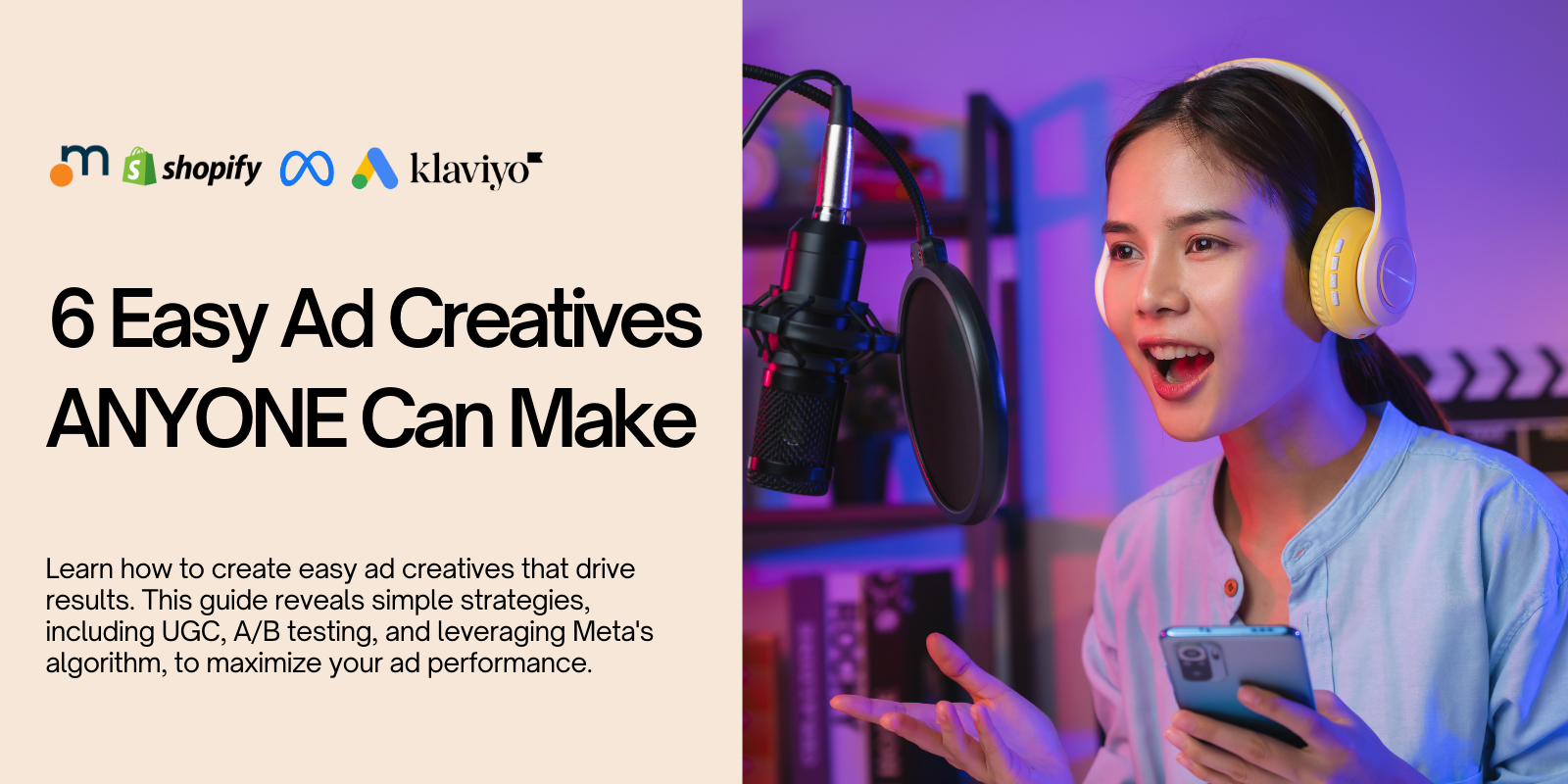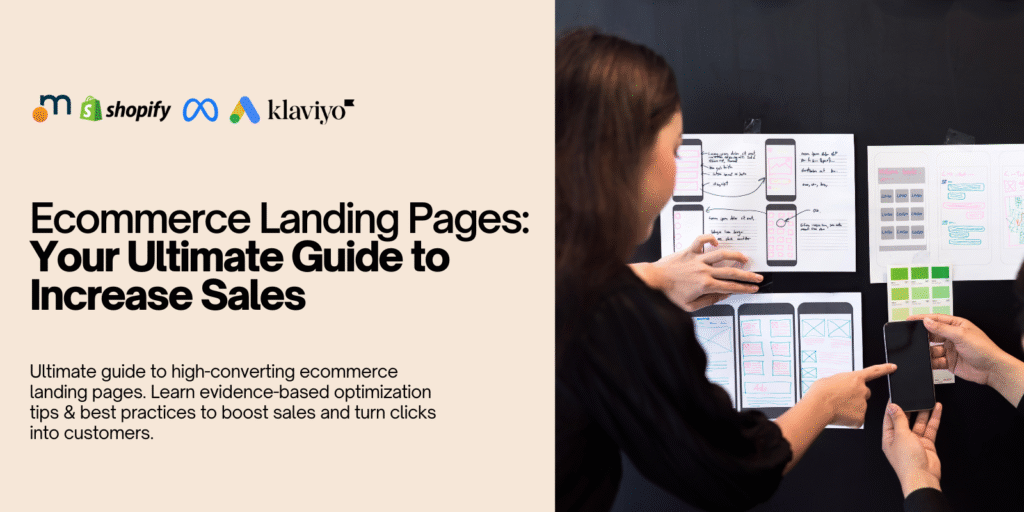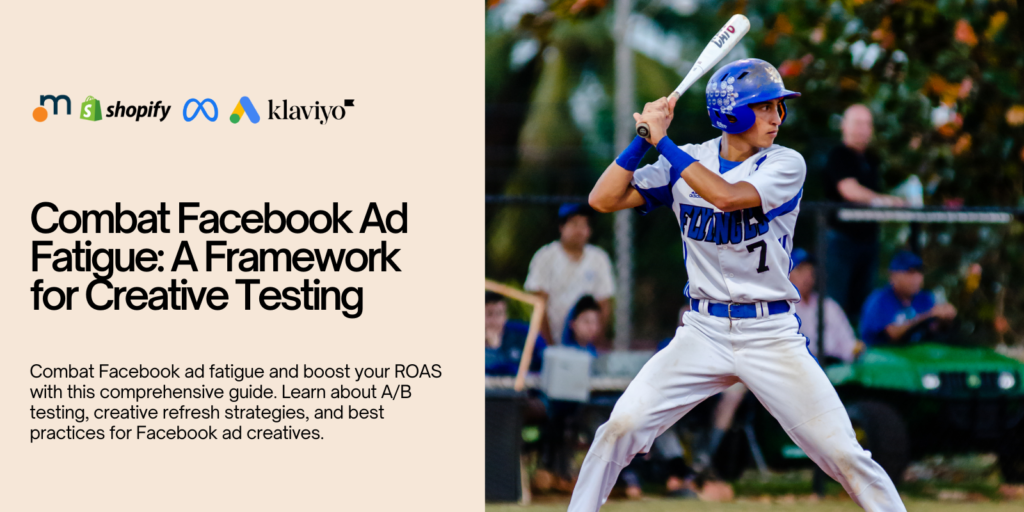Creating effective ad creatives doesn’t have to be a complex, time-consuming process. This guide provides a simplified approach to developing easy ad creatives that resonate with your target audience and deliver a strong return on investment. We’ll explore key strategies, including leveraging user-generated content, A/B testing, and harnessing the power of Meta’s algorithms, to help you achieve your advertising goals with ease.
The Power of User-Generated Content (UGC) for Easy Ad Creatives
Authenticity is king in the digital age. Consumers are bombarded with polished, professional advertising, making them increasingly skeptical of traditional marketing messages. This is where user-generated content (UGC) shines. UGC refers to any content—photos, videos, reviews—created by your customers or users rather than a brand. UGC is a goldmine for creating easy ad creatives that feel genuine and relatable.
Why is UGC so effective for Easy Ad Creatives?
- Trust and Relatability: UGC offers social proof and genuine experiences, building trust with potential customers.
- Diversity: UGC provides diverse perspectives and real-life applications of your product or service.
- Cost-Effectiveness: It’s a budget-friendly alternative to expensive professional photography or videography.
- Increased Engagement: People engage more with content from “real people” like themselves.
Sourcing High-Quality UGC for Easy Ad Creatives:
- Influencer Seeding: Send products to influencers in exchange for authentic reviews and content.
- Contests and Giveaways: Encourage user participation by offering incentives for content creation.
- Brand Hashtags: Create a unique hashtag and encourage customers to use it when sharing content related to your brand.
- Customer Reviews: Repurpose positive customer reviews and testimonials in your ads.
Examples of Brands Using UGC for Easy Ad Creatives:
- Airbnb: Showcases user-submitted travel photos, inspiring wanderlust and trust in the platform.
- GoPro: Features user-generated action videos, demonstrating the camera’s capabilities in exciting ways.
- Fashion Brands: Utilize customer outfit posts to showcase their clothing in real-life scenarios.
A/B Testing for Optimal Performance
Data-driven decision-making is crucial for ad creative success. A/B testing allows you to compare different versions of your ads to see which performs best. This eliminates guesswork and ensures you’re investing in creatives that deliver results.
Key Elements to Test:
- Headlines: Test different headlines to see which grabs attention most effectively.
- Ad Copy: Experiment with different messaging, calls to action, and tone of voice.
- Visuals: Compare different images or videos to see which resonates best with your audience.
- Call-to-Actions (CTAs): Test different CTA buttons and wording to optimize click-through rates.
- Landing Page: Ensure your landing page aligns with your ad creative and provides a seamless user experience.
Tools and Techniques for Effective A/B Testing:
- Meta Ads Manager: Offers built-in A/B testing features for various ad elements.
- Google Optimize: A free tool that allows you to run A/B tests on your website and landing pages.
- Third-party A/B testing platforms: Provide advanced features and analytics for more in-depth testing.
Analyzing Results and Implementing Changes:
- Statistical Significance: Ensure your results are statistically significant to avoid making changes based on random fluctuations.
- Iterative Testing: Continuously test and refine your creatives based on data and insights.
Leveraging Meta’s Advertising Algorithm
Meta’s algorithm is a powerful tool that can help you reach the right audience with your ads. Understanding how it works is key to optimizing your campaigns for success.
Key Factors Influencing Meta’s Algorithm:
- Relevance: Ensure your ads are relevant to your target audience’s interests and behaviors.
- Engagement: Encourage engagement with your ads through compelling visuals, interactive elements, and clear calls to action.
- User Experience: Provide a positive user experience with relevant landing pages and fast loading times.
- Bid Strategy: Optimize your bidding strategy to ensure your ads are competitive in the auction.
- Budget Allocation: Allocate your budget effectively across different campaigns and ad sets.
Optimizing Your Campaigns for Meta’s Algorithm:
- Clear Messaging: Use concise and compelling language that resonates with your target audience.
- High-Quality Visuals: Use eye-catching visuals that are relevant to your product or service.
- Strong CTAs: Use clear and actionable CTAs that encourage users to take the desired action.
- Landing Page Relevance: Ensure your landing page is relevant to your ad creative and provides a seamless user experience.
- Automated Tools: Utilize Meta’s automated tools and features to optimize your campaigns.
Staying Up-to-Date with Algorithm Changes:
- Follow Meta’s Resources: Stay informed about algorithm updates and best practices through Meta’s official resources.
- Industry Blogs and Experts: Follow industry blogs and experts to stay ahead of the curve.
Diversifying Ad Formats
Experimenting with different ad formats can help you reach a wider audience and achieve different marketing objectives.
Exploring Different Ad Formats:
- Image Ads: Simple and effective for showcasing your product or service.
- Video Ads: Engaging and versatile for storytelling and demonstrating product features.
- Carousel Ads: Allow you to showcase multiple products or features in a single ad.
- Stories Ads: Immersive and engaging format for reaching users on mobile devices.
- Interactive Ads: Utilize polls, quizzes, and other interactive elements to increase engagement.
- Augmented Reality (AR) Ads: Offer an innovative and interactive way to showcase your products.
Matching Ad Formats to Campaign Objectives:
- Brand Awareness: Use visually appealing formats like video and image ads to increase brand visibility.
- Direct Response: Use formats with strong CTAs, like carousel ads or collection ads, to drive conversions.
- Consideration Stage: Use informative formats like carousel ads or video ads to educate potential customers.
- Purchase Stage: Use retargeting ads with special offers or discounts to encourage conversions.
Examples of Effective Ad Format Combinations:
- Video and Image Ads: Use video ads for storytelling and image ads for retargeting.
- Carousel Ads and Dynamic Creative Optimization: Combine carousel ads with dynamic creative optimization to personalize the ad experience for each user.

Cost Caps and Budget Management
Effective budget management is crucial for maximizing your ad spend and achieving your advertising goals.
Setting Realistic Budget Expectations:
- Align with Business Goals: Determine your advertising budget based on your overall business goals and marketing objectives.
- Industry Benchmarks: Research industry benchmarks and competitor analysis to get an idea of realistic budget expectations.
Utilizing Cost Caps to Control Spending:
- Cost-per-Click (CPC): Set a maximum CPC to control how much you’re willing to pay for each click on your ad.
- Cost-per-Thousand Impressions (CPM): Set a maximum CPM to control how much you’re willing to pay for every 1,000 impressions of your ad.
Monitoring and Adjusting Budgets Based on Performance:
- Analyze Key Metrics: Track key metrics like conversion rate, click-through rate (CTR), and return on ad spend (ROAS) to assess campaign performance.
- Identify Areas for Improvement: Analyze data to identify areas where you can optimize your campaigns and improve efficiency.
- Reallocate Budget: Shift budget from underperforming campaigns to high-performing ones to maximize ROI.
Scaling Winning Campaigns
Once you’ve identified winning campaigns, it’s time to scale them for increased reach and impact.
Identifying Winning Campaigns:
- Key Performance Indicators (KPIs): Track KPIs like conversion rate, CTR, and ROAS to identify campaigns that are exceeding expectations.
Scaling Strategies for Increased Reach and Impact:
- Expand Targeting: Broaden your targeting parameters to reach a larger audience while maintaining relevance.
- Increase Budget: Gradually increase your budget allocation to high-performing campaigns.
- Creative Variations: Create variations of your winning creatives to combat ad fatigue and maintain engagement.
Maintaining Performance During Scaling:
- Continuous Monitoring: Continuously monitor campaign performance to ensure you’re maintaining or improving results as you scale.
- Avoid Audience Fatigue: Introduce new creatives and refresh your messaging to prevent audience fatigue.

FAQs
What is the best ad format for my business?
The best ad format depends on your specific business goals and target audience. Experiment with different formats to see what works best for you.
How much should I spend on advertising?
Your advertising budget should be aligned with your overall business goals and marketing objectives. Consider industry benchmarks and competitor analysis when setting your budget.
How long does it take to see results from my ads?
The time it takes to see results can vary depending on various factors, including your budget, targeting, and ad quality. It’s important to be patient and allow time for your campaigns to optimize.
How can I improve my ad targeting?
Use Meta’s detailed targeting options to reach your ideal audience. Consider factors like demographics, interests, behaviors, and location.
What are some common mistakes to avoid in ad creative?
Avoid using low-quality visuals, unclear messaging, and weak calls to action. Ensure your ads are visually appealing, clearly communicate your message, and encourage users to take the desired action.
Conclusion

Creating effective ad creatives doesn’t have to be a daunting task. By following the strategies outlined in this guide—embracing UGC, leveraging A/B testing, and harnessing the power of Meta’s algorithm—you can simplify the process and achieve your advertising goals with ease. Remember to continuously monitor performance, adapt to changes, and stay creative to maximize your ROI and drive meaningful results.










